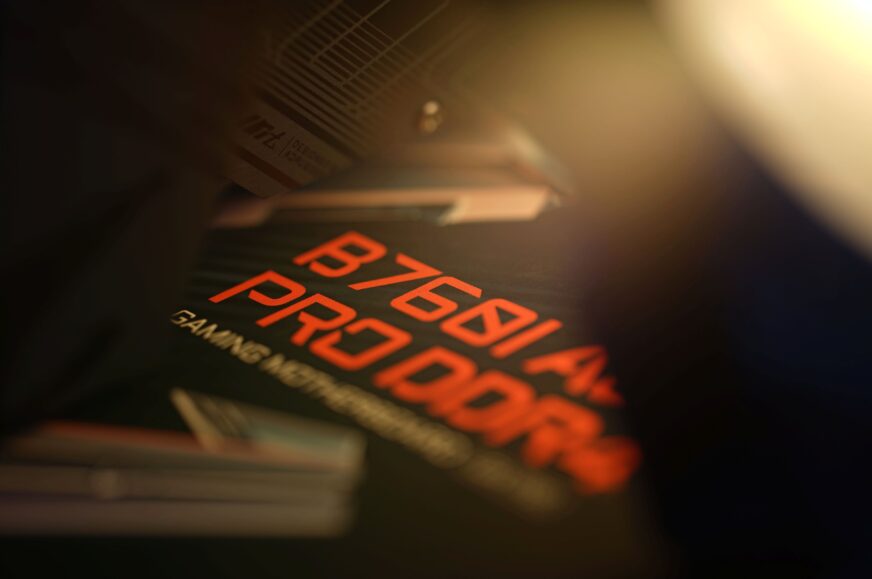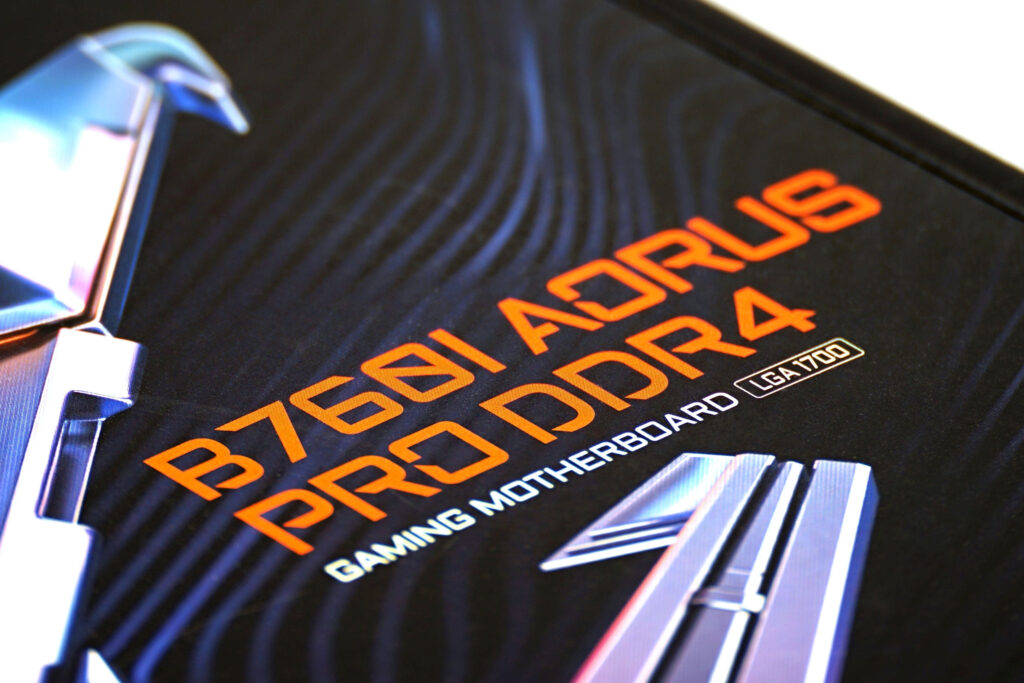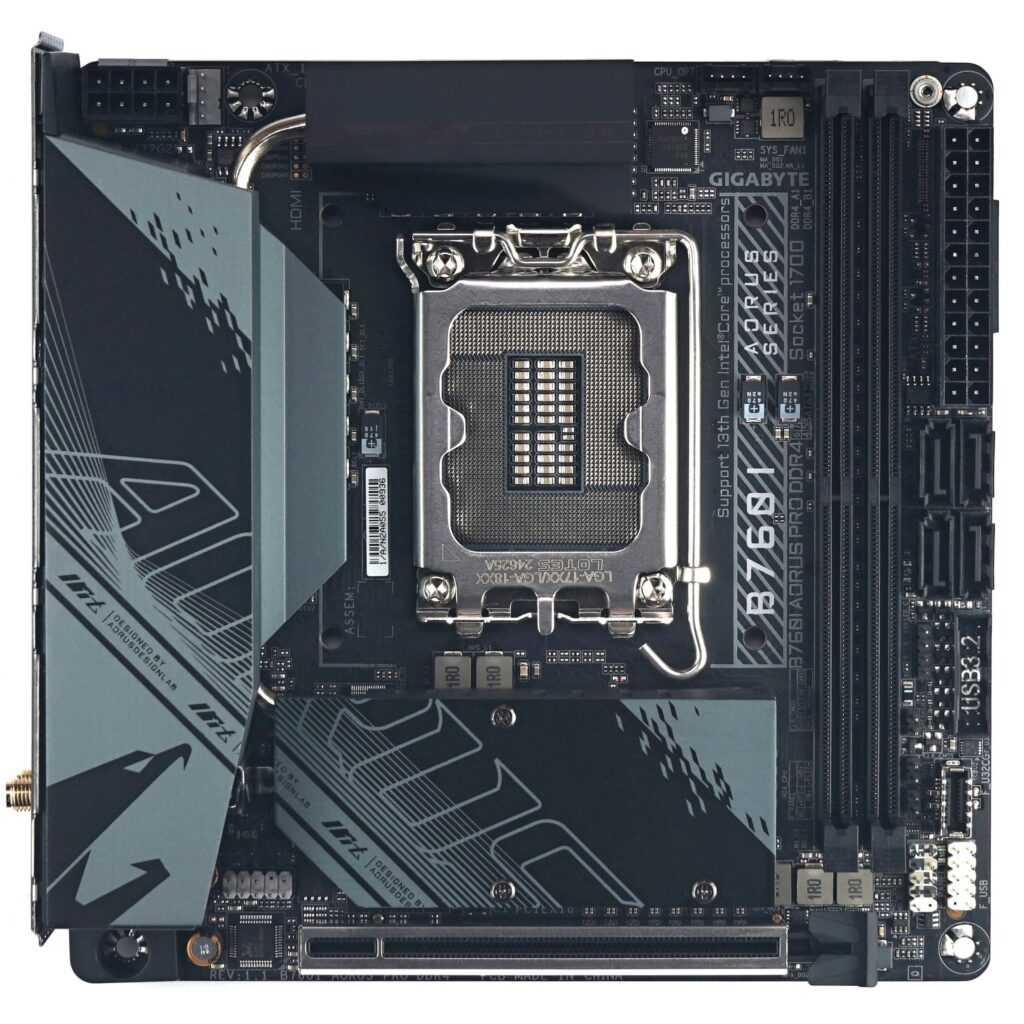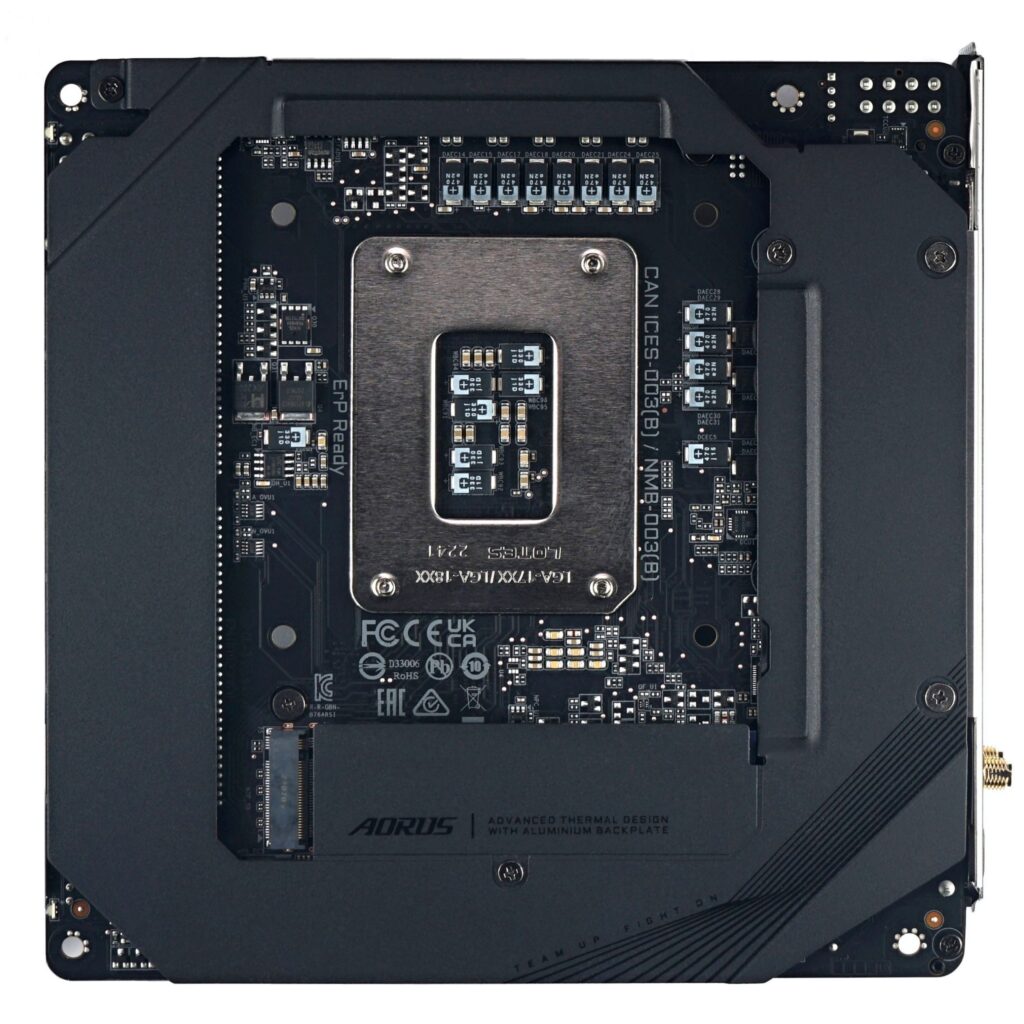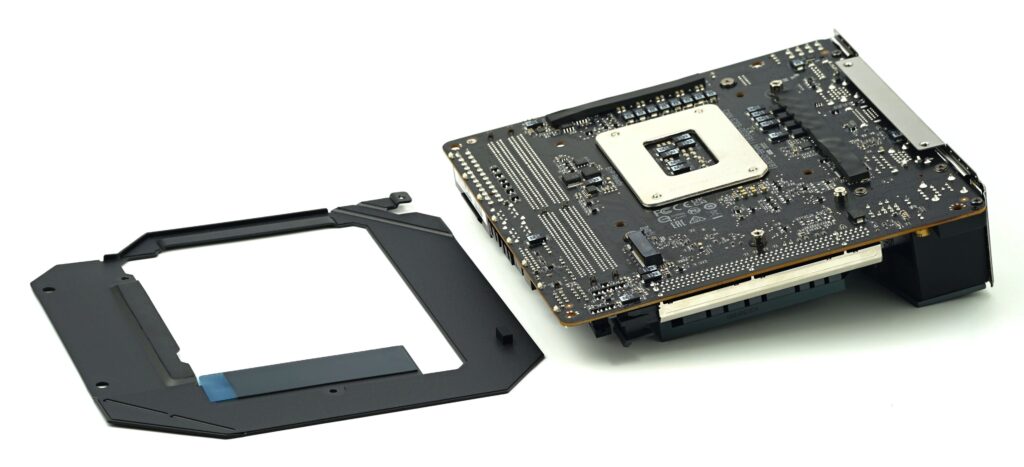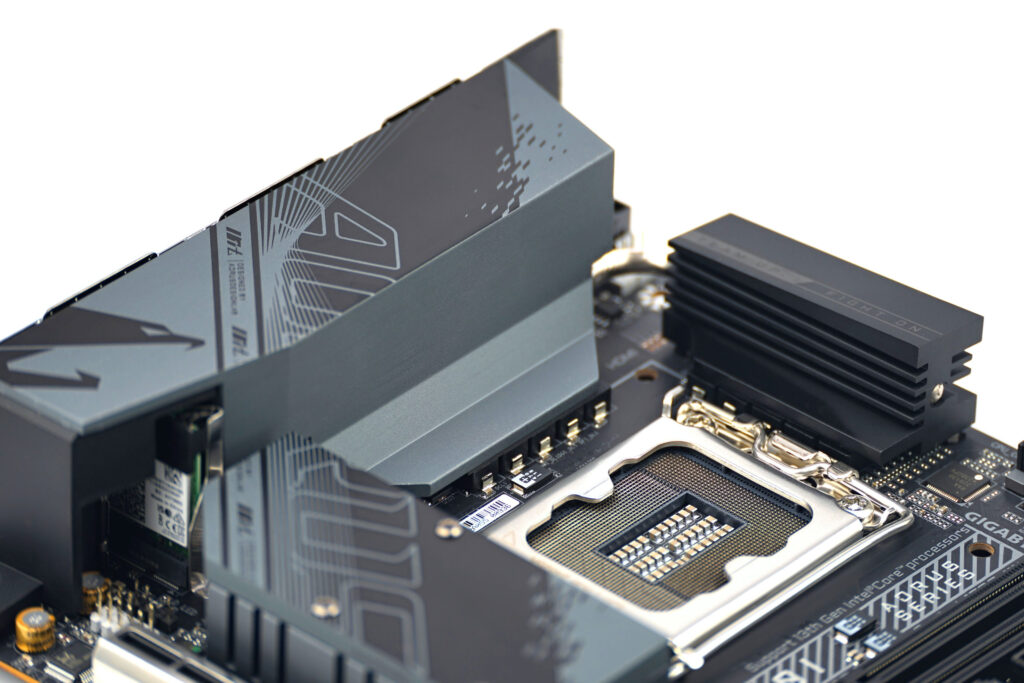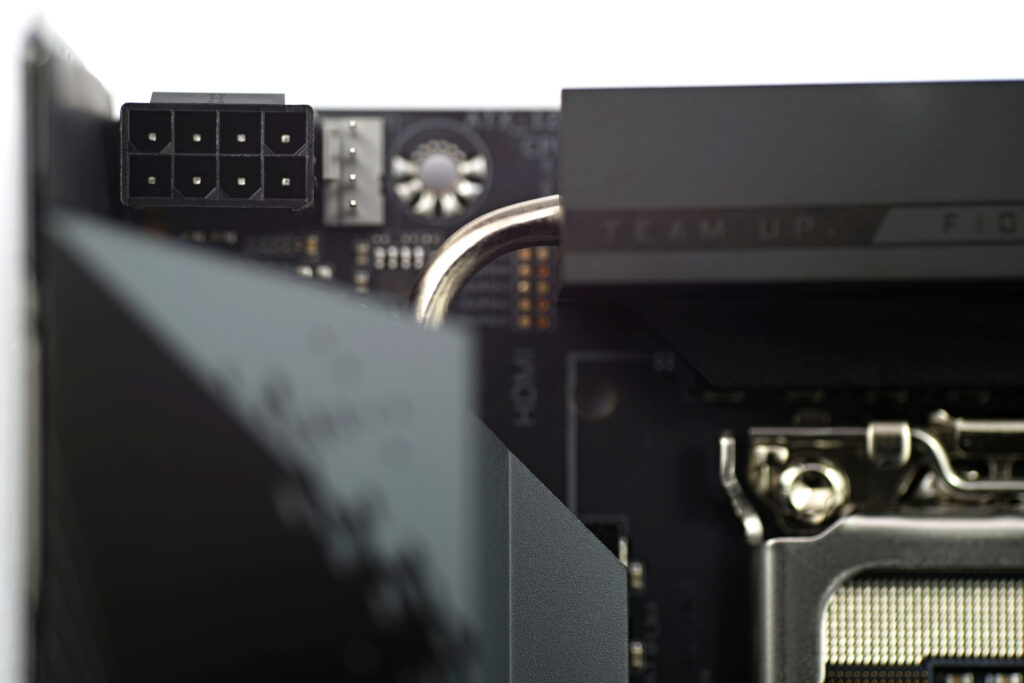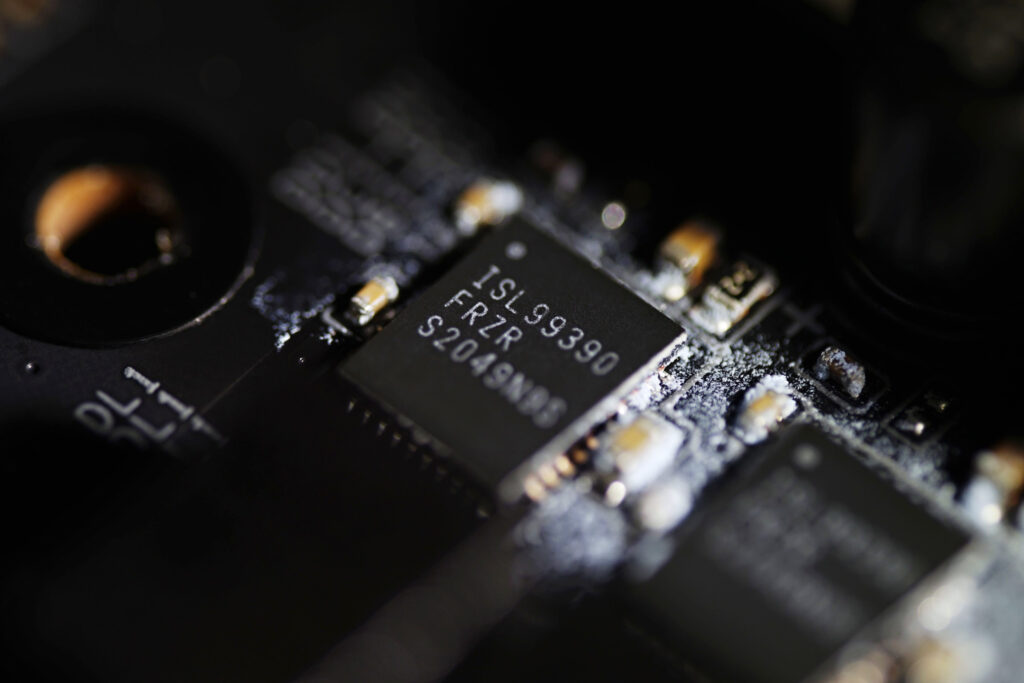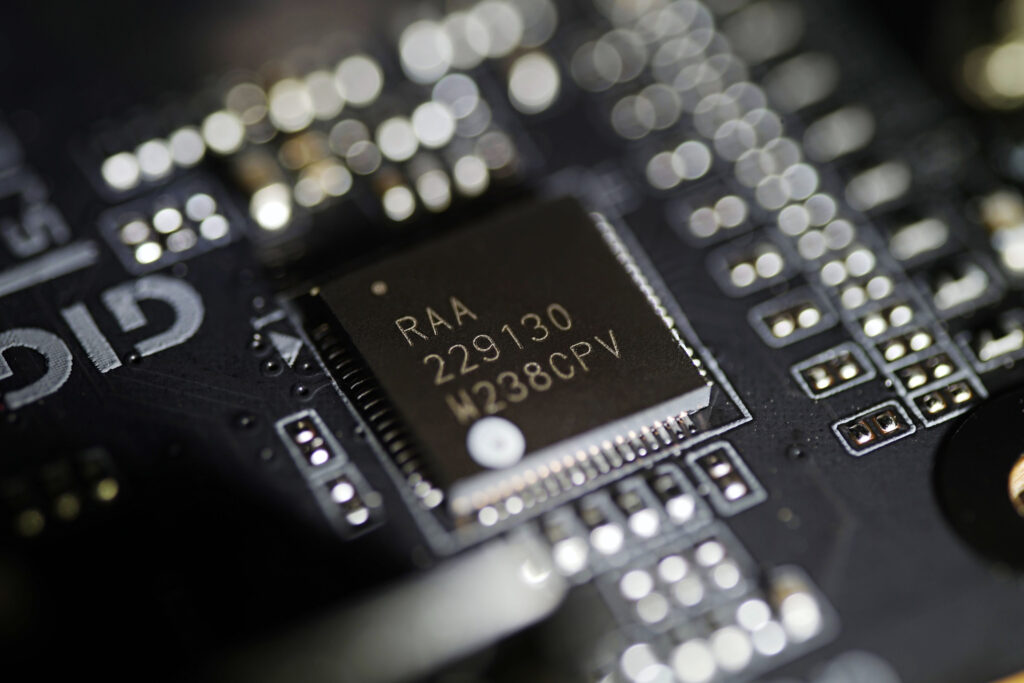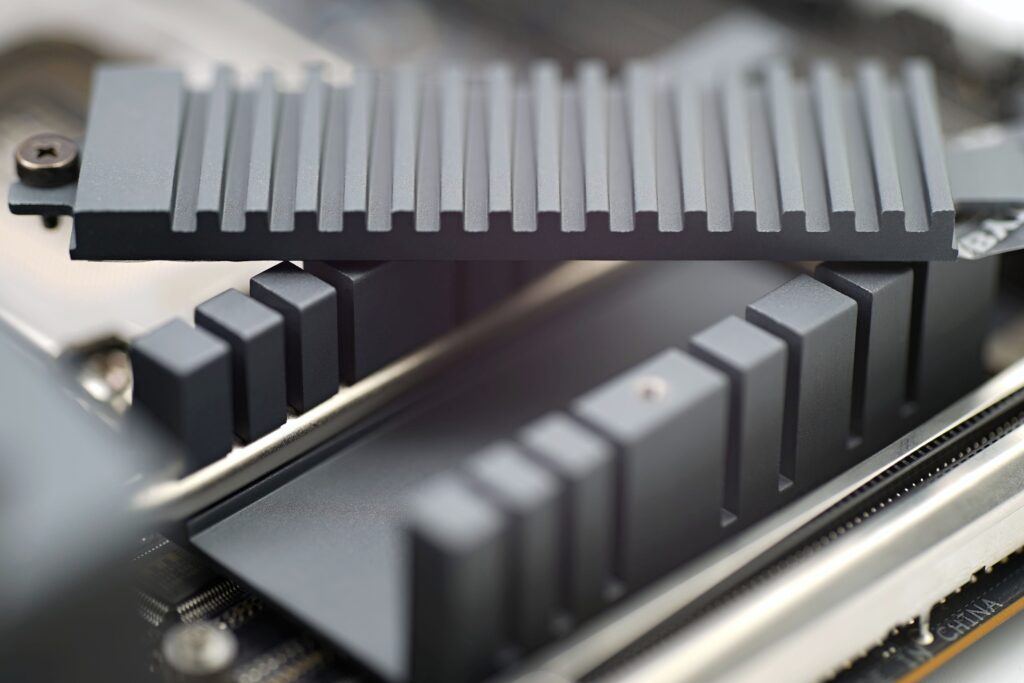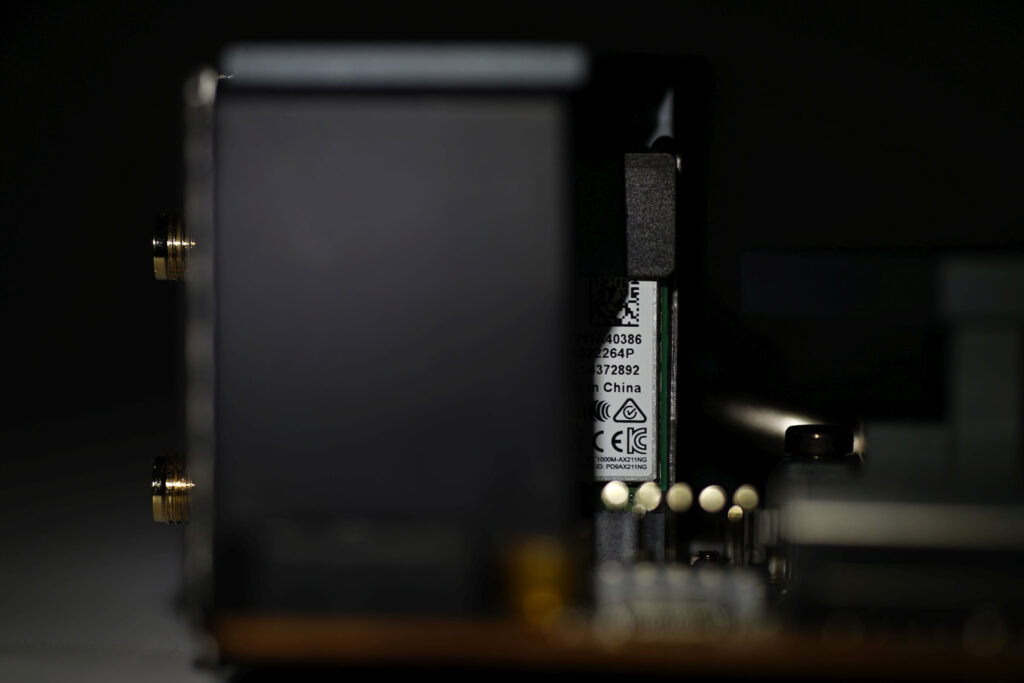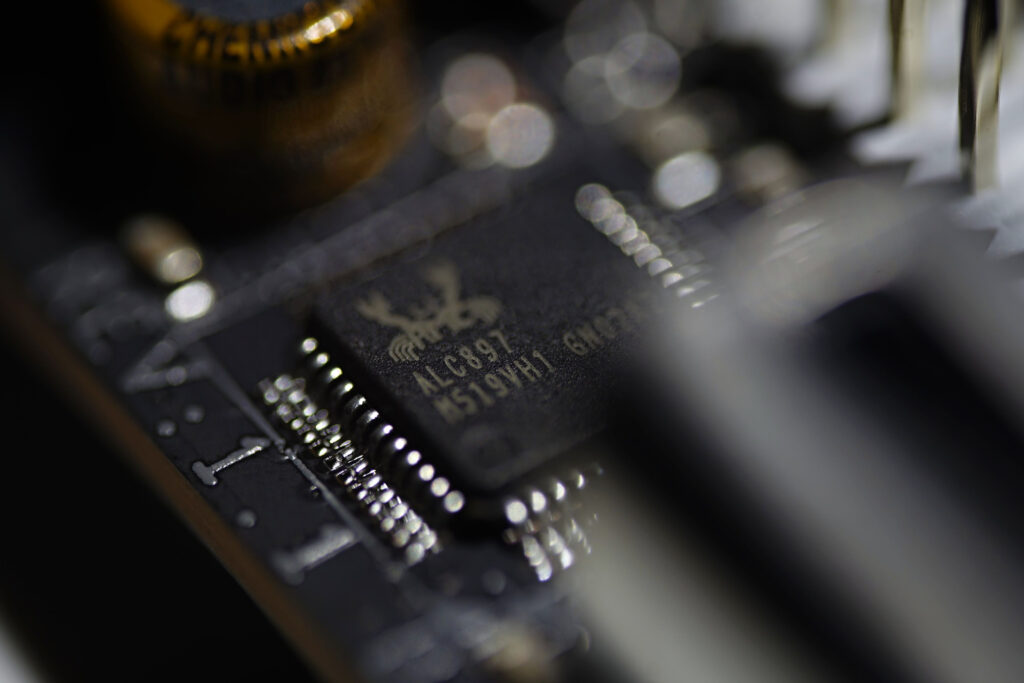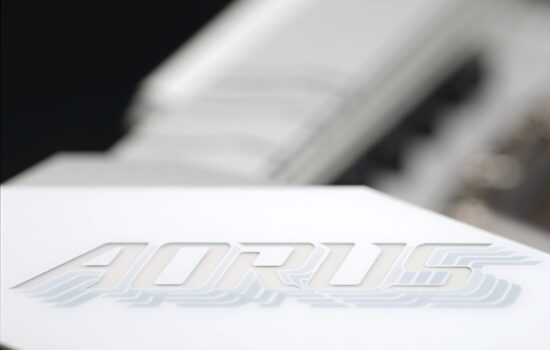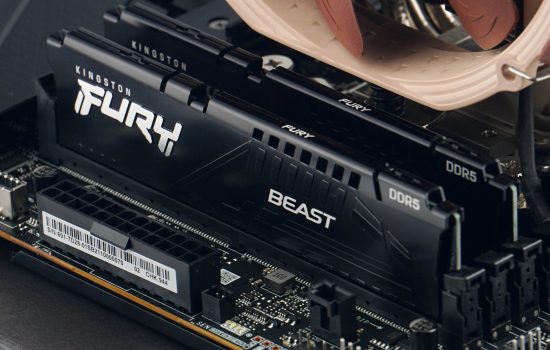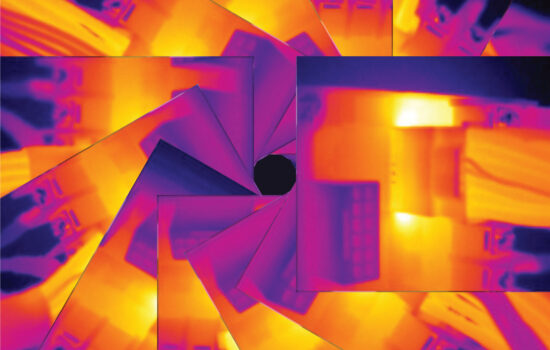Gigabyte B760I Aorus Pro DDR4 in detail
In the tests, we looked at a Mini-ITX motherboard. A warning finger is usually put over this format in connection with powerful CPUs, but often unjustifiably. This would be the case even with one of the cheapest models for the LGA 1700 platform – the B760I Aorus Pro DDR4. The “cut off” is mainly things you may not need, for example because a larger number of slots not only won’t be used, but also doesn’t fit into the vision of a space-saving PC build.
It’s been a while since we last tackled a Mini-ITX motherboard test. This stems from less supply and naturally less demand. Not only in terms of demand for tests, but especially for Mini-ITX motherboards themselves. The lower attractiveness with users is rather strange at the same time, as extensions beyond this format are usually typical for specific and thus minority systems. The fact that small builds based on Mini-ITX motherboards do not evoke the same “performance” as computers that are many times larger may also play a role in the selection process. But that’s just… a feeling, an emotion.
| Parameters | Gigabyte B760I Aorus Pro DDR4 | |
| MSI MAG Z690 Tomahawk DDR4 | ||
| Socket | Intel LGA 1700 | |
| Chipset | Intel B760 | |
| Format | Mini-ITX (170 × 170 mm) | |
| CPU power delivery | 10-phase | |
| Supported memory (and max. frequency) | DDR4 (5333 MHz) | |
| Slots PCIe ×16 (+ PCIe ×1) | 1× (+ 0×) | |
| Centre of socket to first PCIe ×16 slot | 90 mm | |
| Centre of socket to first DIMM slot | 56 mm | |
| Storage connectors | 4× SATA III, 2× PCIe 4.0 ×4 (80 mm) | |
| PWM connectors for fans or AIO pump | 3× | |
| Internal USB ports | 1× 3.2 gen. 2 type C, 2× 3.2 gen. 1 type A, 2× 2.0 type A | |
| Other internal connectors | 1× TPM, 1× ARGB LED (5 V), 1× RGB LED (12 V) 1× jumper Clear CMOS | |
| POST display | no (but has debug LED) | |
| Buttons | Flash BIOS, Clear CMOS | |
| External USB ports | 1× 3.2 gen. 2 type C, 1× 3.2 gen. 2 type A, 4× 3.2 gen. 1 type A, 2× 2.0 type A | |
| Video outputs | 1× HDMI 2.1, 1× DisplayPort 1.4 | |
| Network | 1× RJ-45 (2,5 GbE) – Intel I225-V, WiFi 6 (802.11 a/b/g/n/ac/ax), Bluetooth 5.2 | |
| Audio | Realtek ALC897 (7.1) | |
| Other external connectors | – | |
| Suggested retail price | 195 EUR |
Gigabyte B760I Aorus Pro DDR4
For the LGA 1700 platform, this is a cheaper option. This is indicated by both the mid-range chipset used (Intel B760) and support for the older DDR4 memory standard. Compared to DDR5 memory, the main advantage is the lower price and a significantly better price/performance ratio, but there’s the longer moral life of DDR5 in terms of future upgrade options, where DDR4 memory will no longer be used. If that was the only complication, Gigabyte has the B760I Aorus Pro (DDR4) in a variant with DDR5 memory support as well. You’ll recognize this one by its designation (B760I Aorus Pro) without the “DDR4”.
And then there’s the even higher-end Z790I Aorus Ultra. Thus, we can note that in comparison with competing manufacturers, Gigabyte’s offer in this segment (Mini-ITX format with LGA 1700) is above standard. But now to the B760I Aorus Pro DDR4.
The square PCB format with a side of 170 mm is characterized by only one PCI Express (4.0) slot. It is a fully-fledged (×16) one and thanks to the reinforcement it is well prepared mechanically for the installation of heavy graphics cards. Its distance from the CPU socket is also quite large here. From the center of it to the center of the PCIe ×16 slot, it’s 90 mm, which is also enough to ensure compatibility with larger tower coolers. Older Mini-ITX boards often struggled with these, there were collisions, but now, the CPU cooler won’t happen to interfere in the space of the graphics card. For that, it would have to be wider than 180mm, which is not something you’ll encounter in practice.
From the opposite side, the PCB of the motherboard is protected and strengthened by a backplate. The latter is also involved in cooling, for example also of the SSD. One (second) M.2 slot (with PCIe 4.0 ×4 support) is also on this side.
There is some disadvantage in supporting SSDs only without a cooler, otherwise (with a built-in SSD cooler) backplate removal would be necessary. The block with the thermalpad on the SSD is in fact a fixed part of the backplate, which is of course good in terms of using more cooling area.
The backplate (by the way, made of 1.2 mm thick aluminum sheet weighing about 50 grams) is quite large and practically does not interfere only in the parts where it could collide with the mounting systems of other components. Whether it’s the backplates of CPU coolers or the case standoffs.
However, if necessary, removing the motherboard backplate is easy and nothing will “fall apart” afterwards. VRM coolers do not use this backplate for their mounting. However, it does partially contribute to the (VRM) cooling. In fact, there are thermal pads between the backplate and the PCB in the area behind the integrated circuits with MOSFETs.
The foundation of cooling the VRM and indeed the entire motherboard is traditionally from the front. These are heatsinks that are connected by a heatpipe for more even heat distribution. There are as many as three of these heatsinks. Two on the VRM and the third is on the chipset.
Whether the inclusion of a chipset heatsink in this system is beneficial to achieving more efficient cooling is hard to say. The chipset temperature is at a similar level to the Asus Strix B760-A Gaming WiFi D4 or MSI MAG B760M Mortar WiFi motherboards. It is even a bit higher, but this result does not answer the question whether the heatpipe heats up the heatsink (from the VRM) or cools it down in favor of the lowest possible chipset temperature. With such small differences, other variables come into play here, such as the sizes of the heatsinks and their emissive surfaces, or the thermal conductivity properties at the level of the thermal interface between the chip and the cooler.
The Gigabyte B760I Aorus Pro DDR4 uses a 10-phase (8+1+1) power cascade. The switching circuitry of this DC-DC converter is the Renesas ISL99390, controlled by the Renesas RAA229130. The current carrying capacity per phase is specified at 90 A. However, for high efficiency, loads of approximately one-third or less are assumed. A higher output would already be complicated to accommodate and of course, there are also some reasonable limits as to the current load per cable. Only one of these with an 8-pin connector can be connected here.
The primary M.2 SSD slot is next to the chipset heatsink, but the cooling is separate. This means that the chipset cooler is out of contact with the SSD. It (the SSD) has its own heatsink with a transversely finned profile. Above this SSD cooler there is then an aluminum canopy, which does impair the cooling of the SSD a bit (it kinda acts as an airflow blocker), but that’s only minimal. The Samsung 980 Pro controller temperatures are 78°C instead of 76°C (without the canopy/cover). This canopy does have a positive effect on cooling the chipset though, as it absorbs some heat from it.
As for network equipment, in addition to 2.5-gigabit Ethernet (Intel I225-V) there is WiFi 6E Intel AX211. The wireless module is installed vertically in the M.2 slot right next to the SMA antenna connectors. These are included, built into a tower with a stand adapted to be placed on a desk or on a case. The cable is approximately 77 cm long.
For the fan connectors, you may be surprised by the smaller format, but an adapter is included. This smaller format which is on fans (or a pump) is within the secondary connector to the CPU cooler and also in the case of the system connector. Only the CPU_fan connector is conventional.
The equipment of the rear panel with external connectors is average – eight USB ports, HDMI and DisplayPort connectors, and also worth noting is the fairly common for Gigabyte configuration of two 3.5 mm jacks and an optical S/PDIF output.
Meanwhile, the audio codec is Realtek ALC897. It is often on the fringes of user interest, but we can’t judge whether it is justified yet, without exact tests. In any case, on an otherwise very decently equipped Mini-ITX board with a price of under two hundred euros, it’s a compromise at worst.
Please note: The article continues in the following chapters.
- Contents
- Gigabyte B760I Aorus Pro DDR4 in detail
- What it looks like in the BIOS
- Methodology: Performance tests
- Methodology: How we measure power draw
- Methodology: Temperature and frequency measurements
- Test setup
- 3DMark
- Borderlands 3
- F1 2020
- Metro Exodus
- Shadow of the Tomb Raider
- Total War Saga: Troy
- PCMark and Geekbench
- Web performance
- 3D rendering: Cinebench, Blender, ...
- Video 1/2: Adobe Premiere Pro
- Video 2/2: DaVinci Resolve Studio
- Graphics effects: Adobe After Effects
- Video encoding
- Audio encoding
- Photos: Adobe Photoshop, Affinity Photo, ...
- (De)compression
- (De)encryption
- Numerical computing
- Simulations
- Memory and cache tests
- M.2 (SSD) slots speed
- USB ports speed
- Ethernet speed
- Power draw without power limits
- Power draw with power limits
- Achieved CPU clock speed
- CPU temperature
- VRM temperature – thermal imaging of Vcore and SOC
- SSD temperature
- Chipset temperature (south bridge)
- Conclusion





